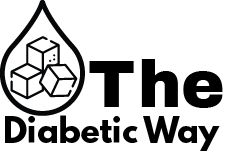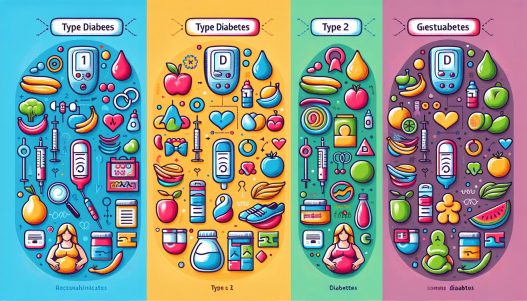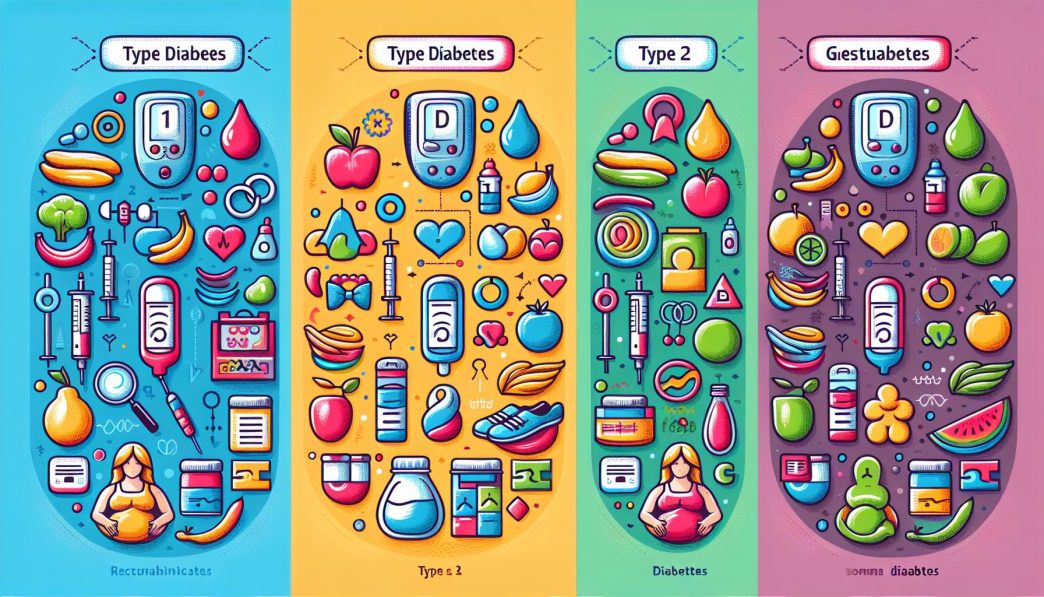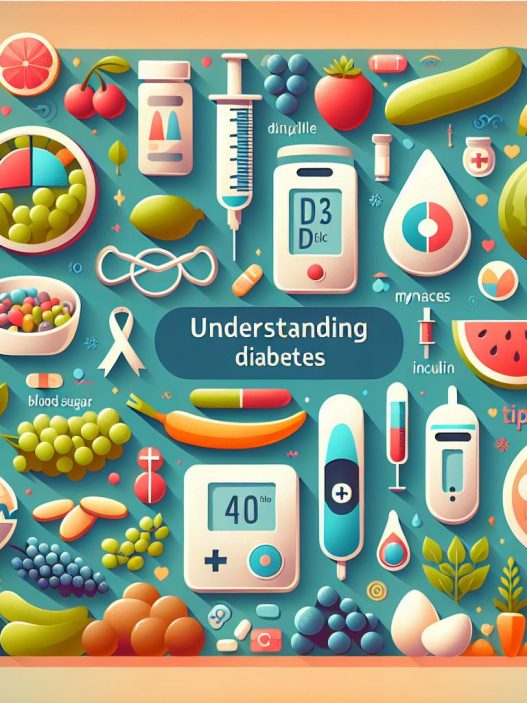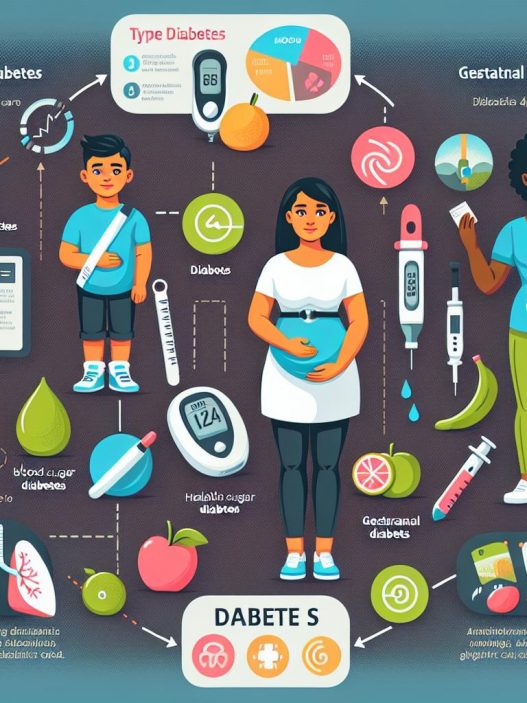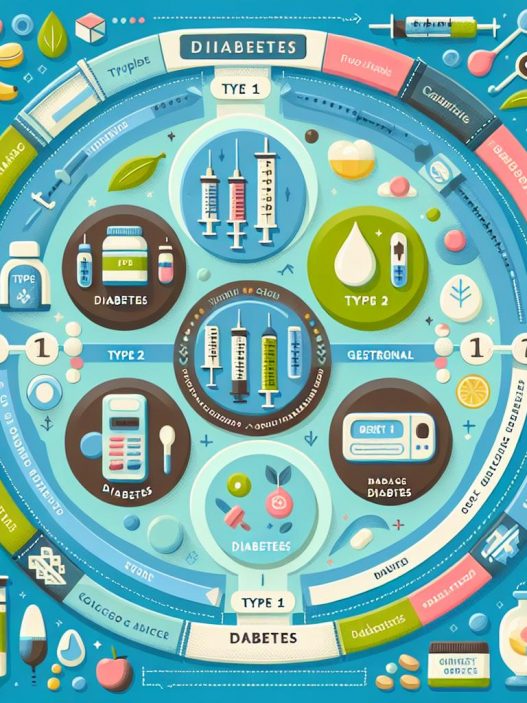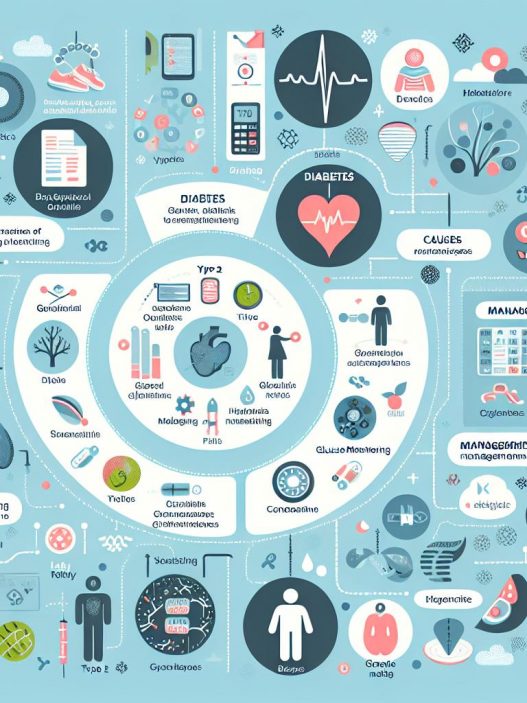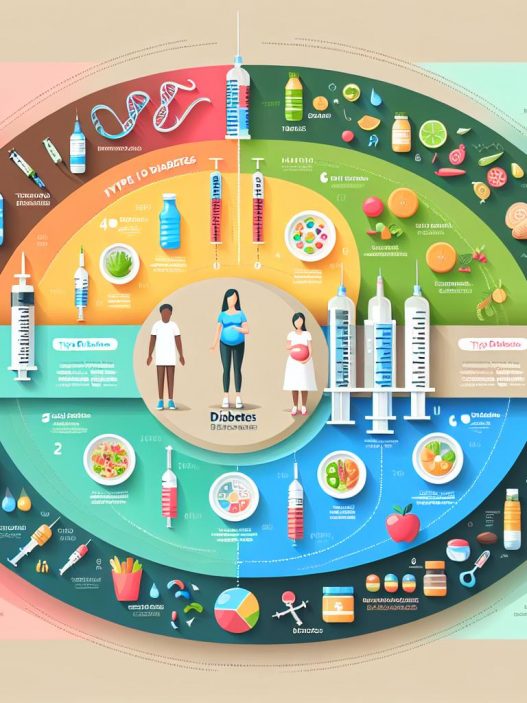# Understanding Diabetes: Exploring the Spectrum of Type 1, Type 2, and Gestational Diabetes
Diabetes is a chronic condition that affects millions of individuals worldwide, significantly impacting their quality of life. Understanding diabetes is crucial, as it encompasses a range of disorders, primarily Type 1, Type 2, and gestational diabetes. This comprehensive article aims to demystify these forms of diabetes, their symptoms, causes, and management strategies, providing valuable insights to anyone looking to better understand this complex condition.
What is Diabetes? A Comprehensive Overview
Diabetes is a metabolic disorder characterized by high blood sugar levels over extended periods. This health issue emerges either when the body fails to produce adequate insulin or when it becomes resistant to insulin’s effects. Insulin is a hormone produced by the pancreas, and its primary function is to facilitate the entry of glucose into cells to be used for energy. When this process is disrupted, it can lead to severe health complications if left unmanaged.
Understanding the different types of diabetes is essential to differentiate their underlying mechanisms, symptoms, and treatment approaches. The three principal categories of diabetes include Type 1, Type 2, and gestational diabetes, each having unique characteristics and requiring tailored strategies for management and prevention.
Moreover, diabetes can lead to a cascade of complications, including cardiovascular diseases, kidney problems, nerve damage, and eye issues, leading to blindness and other health concerns. Therefore, comprehensive knowledge about diabetes is critical for effective management and prevention, enabling individuals to lead healthier lives.
Type 1 Diabetes: An Autoimmune Condition
Type 1 diabetes (T1D) is an autoimmune disorder where the body’s immune system mistakenly attacks and destroys insulin-producing beta cells in the pancreas. This condition is often diagnosed in children, adolescents, and young adults, though it can develop at any age. The exact cause of Type 1 diabetes is still under investigation, with genetic predisposition and environmental factors playing significant roles.
Individuals with Type 1 diabetes must rely on insulin therapy for survival since their bodies can no longer produce this vital hormone. Insulin can be administered via injections or insulin pumps. The management of T1D involves a comprehensive care plan that includes regular blood glucose monitoring, carbohydrate counting, and understanding how different foods and activities affect blood sugar levels. Balancing insulin doses with food and physical activity is crucial to maintaining optimal blood glucose levels and preventing complications.
Additionally, support from healthcare professionals, diabetes educators, and peer support groups can immensely benefit those living with Type 1 diabetes. Psychological factors, such as coping strategies and emotional well-being, also play a crucial role in diabetes management, as individuals often struggle with the burden of living with a chronic disease.
Type 2 Diabetes: A Metabolic Disorder
Type 2 diabetes (T2D) is the most common form of diabetes, accounting for about 90-95% of all diabetes cases. T2D predominantly affects adults, although an increasing number of children and adolescents are being diagnosed due to rising obesity levels and sedentary lifestyles. Unlike Type 1 diabetes, people with Type 2 diabetes still produce insulin, but their bodies become resistant to its effects. This condition often develops gradually, with symptoms that may go unnoticed for years.
Several risk factors contribute to the development of Type 2 diabetes. Obesity, physical inactivity, poor diet, and family history are significant contributors. The accumulation of excess fat, particularly around the abdomen, leads to inflammation and insulin resistance, resulting in elevated blood sugar levels. Managing T2D often starts with lifestyle modifications, including dietary changes, regular physical activity, and weight management.
In some cases, individuals with Type 2 diabetes may require medication to help control blood sugar levels. These medications can work in several ways, such as increasing insulin sensitivity, stimulating insulin production, or slowing carbohydrate absorption from the digestive tract. Continuous monitoring of blood glucose levels, regular check-ups with healthcare professionals, and education regarding self-management techniques are vital in controlling Type 2 diabetes and preventing complications.
Gestational Diabetes: Understanding the Risks and Management
Gestational diabetes is a specific type of diabetes that occurs during pregnancy. It develops when the body cannot produce enough insulin to meet the increased needs during this period, leading to elevated blood sugar levels. Gestational diabetes typically arises in the second or third trimester and generally resolves after childbirth. However, it can have significant implications for both the mother and the child.
Pregnant women who are overweight, have a family history of diabetes, or have previously given birth to a large baby are at a higher risk of developing gestational diabetes. It is essential for healthcare providers to screen pregnant women for this condition, particularly during routine prenatal visits. If gestational diabetes is diagnosed, immediate intervention is crucial to prevent complications such as preterm birth, high birth weight, and increased risk of cesarean delivery.
Managing gestational diabetes involves a strict regimen of diet and exercise. Monitoring blood glucose levels regularly is also necessary to ensure that they remain within target ranges. In some instances, insulin therapy or medications might be necessary to maintain proper blood sugar control. After delivery, women with a history of gestational diabetes should receive follow-up care, as they have a higher risk of developing Type 2 diabetes later in life.
The Importance of Early Detection and Diagnosis
Early detection and diagnosis of diabetes are critical in preventing complications and improving overall health outcomes. Symptoms of diabetes can vary widely, and many individuals may not exhibit noticeable signs until the disease has progressed. Common symptoms include excessive thirst, frequent urination, unexplained weight loss, fatigue, and blurred vision. Routine screening is particularly important for those at higher risk, such as individuals with a family history of diabetes, obesity, or other metabolic disorders.
The diagnosis of diabetes typically involves blood tests that measure blood glucose levels. The most common tests include the fasting plasma glucose test, oral glucose tolerance test, and HbA1c test, which provides an average blood sugar level over the past two to three months. Understanding these tests and their implications can empower individuals to take control of their health and advocate for necessary screenings.
Public health initiatives emphasizing awareness and education about diabetes prevention are also crucial. Comprehensive community programs can provide resources for healthy eating, physical activity, and weight management, which are essential in reducing the risk of developing Type 2 diabetes.
Living with Diabetes: Strategies for Effective Management
Living with diabetes requires ongoing vigilance and a multifaceted approach to management. Key strategies include:
1. **Dietary Management**: A balanced diet plays a vital role in diabetes management. Individuals should focus on whole foods, including fruits, vegetables, whole grains, lean proteins, and healthy fats. Carbohydrate counting and understanding the glycemic index of foods can help maintain stable blood glucose levels.
2. **Physical Activity**: Regular exercise is crucial for everyone but especially for those managing diabetes. Engaging in at least 150 minutes of moderate-intensity aerobic activity per week can enhance insulin sensitivity, support weight management, and improve overall cardiovascular health.
3. **Medication Adherence**: For many individuals, diabetes management may include medications or insulin therapy. Adhering to prescribed treatment plans and regular consultations with healthcare providers are key to controlling blood sugar and mitigating risks of complications.
4. **Monitoring Blood Sugar Levels**: Regularly checking blood glucose levels helps individuals understand how their body responds to food, activity, and medication. Continuous glucose monitoring devices are available and can provide real-time data to assist in decision-making.
5. **Psychosocial Support**: Living with a chronic condition can take a toll on emotional well-being. Engaging with support groups, counseling, or mental health resources can provide essential emotional support and coping mechanisms.
Through education, support, and structured management strategies, individuals with diabetes can lead fulfilling lives and minimize health risks associated with the condition.
In conclusion, understanding the various forms of diabetes is essential for individuals affected by this chronic disease. Equipped with knowledge about Type 1, Type 2, and gestational diabetes, individuals can take proactive steps in managing their health and improving their quality of life. Awareness, early detection, and effective management remain the cornerstone strategies for navigating the challenges posed by diabetes. By fostering a supportive environment, encouraging healthy lifestyles, and integrating medical insights, we can work toward a healthier future for those living with diabetes.
